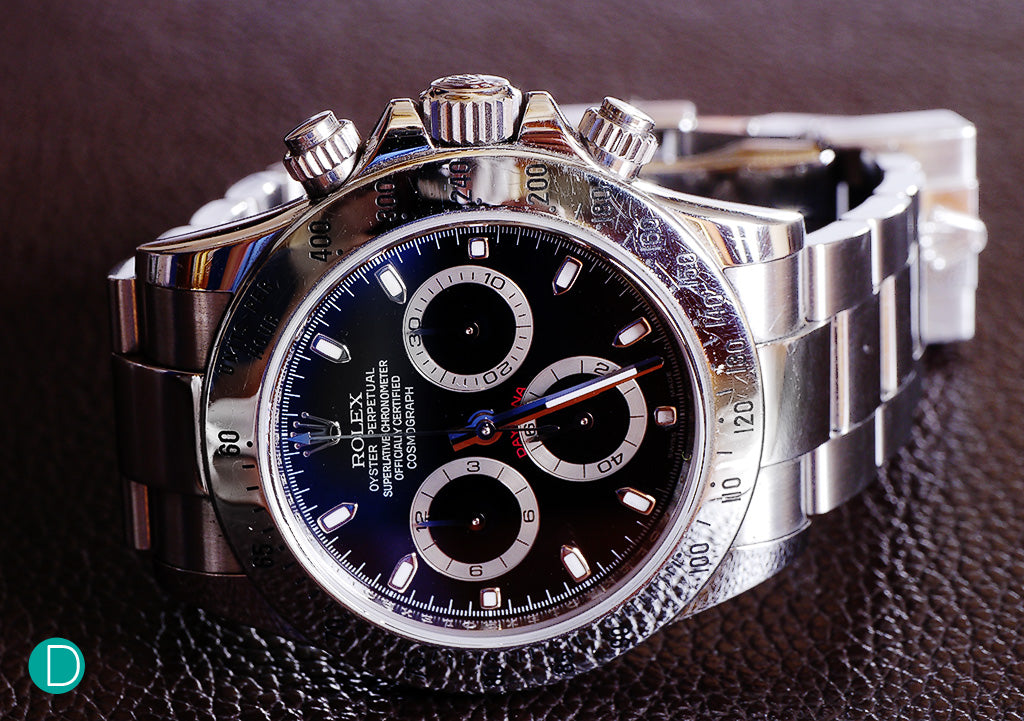Close to 80% of watch troubles that people encounter are self-inflicted due to the lack of necessary know-how and information. It’s the very same reason that makes most of the troubles avoidable. We feel the obligation to bust myths and false expectations amongst watch owners by bringing you this essential information, maybe for the very first time ever.
1. How water resistant is your watch, really?
For starters, let's check what ATM and BAR mean on your watch – both stand for the same thing. The number you see before it marks the water pressure your wristwatch is tested with, not how deep you can dive. For example, 3ATM is equivalent to the pressure under 30m of sea level. Usually, the little booklet called “the manual” that comes with your wristwatch, is where the manufacturer tells you precisely what you may and may not do with your wristwatch. Officially, what the ATM or BAR actually means for you is the following:
3ATM – Washing hands and light rain is allowed
5ATM – Shower, and bath are allowed
10ATM – Watersports and swimming are allowed
20ATM – Snorkeling is allowed
30 ATM – Diving is allowed
Sauna and SPA experience is pretty much prohibited by all watch manufacturers. It has a simple physical reason. Watch casings are made of metal, which by its very nature expands in heat and contracts in the cold (for example the height of Eiffel Tower is 17cm/6in taller in Summer). So you see why the extreme conditions may cause your watch casing to lose its water-resistance. Also, hot vapor can damage the seals on the back of your watch, optics, and crown. Not to mention what the sauna heat can do to the movement of your wristwatch.
2. Check now – the crown must always be "IN"!
This has two very important reasons, so please pay close attention to this one.
1) You may cause the crown to break off
2) Water and moisture get straight inside your watch
Let us leave aside all the “special solutions” and talk about the main two crown types.
The first and most common is usually an in & out crown. All you have to do is push it down as deep as it goes until it is in its natural closed position.
The other one, not so common, but a more secure version is the divers screw-down crown system. You must always make sure you have screwed it down like a bottle cap on to the thread sticking out the casing. This way, it is nearly impossible to break the crown off, and you can rest assured your watch is as water-resistant as the manufacturer has promised it would be.

3. Your watch is not scratchproof.
We feel bad to break it to you, but that’s the truth. Regardless of how much you paid for it. For a good reason, most wristwatch companies use stainless steel 316L to make watch casings. Though it is considered one of the wristwatch's quality traits – being one of the most rigid metals on earth, it is not totally scratchproof. Another reason for its use is its acid resistance – because acid is what human sweat basically is. The cheaper alternatives used are various alloys that are softer – meaning more vulnerable to scratches and affected by your acid-sweat.
All in all, maintaining the good looks of your watch is literally in your own hands. It is unlikely to find a manufacturer who would take your scratched casing in for polishing. It is even more unlikely when the case has been treated with coating technology.
The only scratchproof detail on your watch is the sapphire optics. You’ll need a diamond to leave a mark on it. Regular optics made of mineral glass are as vulnerable to scratches as standard glass.
However, we must say that scratchproof watches do exist. Their casings are treated or coated with certain ceramics, which makes them scratch resistant. Unfortunately, this kind of technology is expensive, and it will undoubtedly inflict on the watch's price. Should you have one of those, then you probably already know it’s scratchproof anyway.

4. Your watch is not shock resistant.
Again, the price of your watch is irrelevant. If it is not advertised as shock proof – it isn’t. We’ll tell you why.
The inside of your watch contains fine and delicate mechanics or electronics. It is not meant to get thrown around or vibrated heavily. You may mess up the movement or break loose the hands and other dial details with some bad luck.
Everything that moves needs maintenance. Like your car, so does your watch.
All mechanical wristwatches may need adjusting from time to time, and some of its parts may even need lubricating. A little daily bang here n there, vibration from your lawnmower – all this can affect the movement inside your wristwatch. It is totally normal and not a sign of bad quality. It’s just how physics is.
In most cases, the manufacturer does not tell exactly how often your watch needs maintenance. The right time to do it is when you see the need for it – when it starts to run behind, forward or not at all.
With quartz movements, it’s all much easier when it comes to maintenance. Just change the battery every now and then. Most movements will indicate a low battery by making the second's hand jump 5 seconds at a time. When you do take your watch in for battery change, have them check all the seals as well – just in case.
Always turn to the retailer or a watchmaker when you notice something’s off. It’s never a good idea to stick it away somewhere; maintenance is not as expensive as people think. It may even occur that the problem is caused by some defects by the manufacturer (warranty case). If that’s the case, then a reasonable merchant will indeed find out the cause and not leave you in trouble.
6. Watch strap or a belt, what’s there to maintain?
One great advantage of a belt is that there’s pants between you and the belt. Wristwatch straps, on the other hand, are attached to your wrist directly. Both your skin and the strap leather are of a natural kind, but with one significant difference. Your skin sweats, the other one does not anymore. Life is contagious, meaning you will create a new bacterial environment inside your leather strap. The nature of it is individual, of course, but one thing is for sure – your sweat will not do any good for the strap. The overall suggestion is to change your wristwatch's leather strap after every six months if worn daily. You can always extend the period with the help of special watch strap leather care products. Only buying it will not do, you’d have to use it regularly. It’s also worth mentioning that if there’s no mentioning of waterproofness on the leather strap itself, it’s not recommended to shower and swim with it, for too much water contact may also ruin the looks of your leather strap. A strap that is worn out will never qualify under warranty terms, and that is a fact.
Useful tip – you don’t always have to go with the original strap, unless your wristwatch strap has some sort of an in-house attach system. If it’s a regular spring bar type leather strap, just measure the width in millimeters and find a suitable alternative elsewhere.
Briefly about metal bracelet maintenance. Though metal bracelets are way more resistant to time and bacterial life, it would still be wise to clean it once in a while with a soft and moist cloth or rinse it with a special metal bracelet cleaning product. It would also be wise to be careful about scratches, as mentioned in the third paragraph of this article.
6. Careful with watch repairmen!
Unfortunately, we have seen a fair share of AEGAON wristwatches, that have been to a watchmaker, but look as if they had been to a shoemaker instead. Optics have been put back with A LOT of weird glue, seals are not put back after battery change, or movements have been damaged with sharp objects, etc. We can suggest that it’s always safer to turn to the merchant first or find a certified watchmaker. There are still good specialists out there. You just have to find them. Also be careful with watchmakers when traveling abroad – a little background check could be in order.

7. Don’t try to be a “hero”.
Changing a watch battery yourself may sound like a good idea – depending on your skills, watch, and tools, but in most cases, it really isn’t. You should know that you may lose the warranty if the wristwatch is opened by an unqualified person. There’s also a great chance to cause more damage to it – more than you may acknowledge at first.
Watch backs come off with a special tool, most people don’t have lying around in their household. Some brand watches even require a special kind of key-tool only their official services possess. Regular watchmakers don’t have them for sure.
The battery is mostly attached to the movement with a screw so tiny that you will probably haven’t got the screwdriver for it. However, if you somehow did manage to change the battery successfully, there’s still a thing or two that can go wrong. It’s not difficult to lose the watchback seal, break it or put it back poorly, resulting in losing water resistance and warranty.
The same goes for mechanical watch maintenance. If you haven’t mastered the watchmaker skills, we can’t recommend you get down to business with an earpick and whatever oil you can find in your shed.
If you knew all of this, then great for you. If you didn’t then even better!
This was just an introduction to the very basic ABC of watches – yet the most important and valuable information to any watch owner. The more exciting and fun stuff is yet to come, so keep an eye on our blog during September or join our mailing list if you want to make sure you don’t miss any of it.



